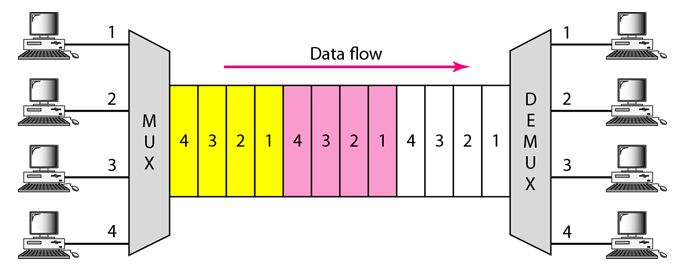Digital to Analog Conversion Techniques:
Digital-to-analog conversion is the process of changing one of the characteristics of an analog signal based on the information in digital data.
A sine wave is defined by three characteristics: amplitude, frequency, and phase. When we change anyone of these characteristics, we create a different version of that wave. So, by changing one characteristic of a simple electric signal, we can use it to represent digital data.
There are three mechanisms for modulating digital data into an analog signal: amplitude shift keying (ASK), frequency shift keying (FSK), and phase shift keying (PSK). In addition, there is a fourth (and better) mechanism that combines changing both the amplitude and phase, called quadrature amplitude modulation (QAM).
Add a comment


